BE OPEN: Sound Portal Lunchtime Talk
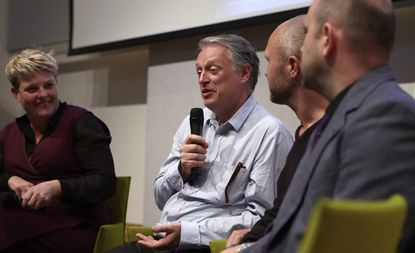
‘Do you remember the very first scene from “A Space Odyssey”, where the monkey picks up a bone and whacks the other monkey over the head with it?’
Ben Evans, London Design Festival director, is describing the inspiration for the design of the BE OPEN Sound Portal, an audio installation that was placed in the centre of Trafalgar Square during last week’s Festival. ‘In the background of the scene,’ he continues, ‘there’s a big black obelisk and no one explains to you what it is. It appears again at the end of the film as a metaphor for the past, present and future.’
Over the course of five days, Trafalgar Square’s million visitors were confronted with the intriguing Space Odyssey-inspired creation. Those who investigated further may have made their way inside the black rubber-clad pod to discover the immersive audio experience in the bright white interior. Each day the Portal showcased the work of a different sound artist, providing a new audio composition for each day of the festival.
The Portal was a collaboration between the London Design Festival and international creative think tank BE OPEN, which hosted a series of events across the capital exploring acoustic design. ‘The BE OPEN Sound Portal is here to switch on our imaginations, to switch on our hearing. It is a new way of reflecting the sounds of our lives,’ says BE OPEN founder Elena Baturina.
The Portal was conceived by Evans, with critical support from the BE OPEN team. It was designed by product designer Stephen Phillips and built by a specialist audio team at Arup, then flooded with sound by artists selected by sound impresario Richard Whitelaw.
In a lunchtime talk held at the V&A during the festival, Evans, Phillips and Whitelaw were joined by two of the participating musicians, Nathaniel Robin Mann and Jo Thomas, to discuss how the project came together.
‘Trafalgar Square is a tough nut to crack,’ explained Evans. ‘While it’s a great public space and it’s got an incredible passer-by audience, you can get it horribly wrong. So we thought long and hard about what it was going to be.’ Knowing they wanted to work with sound to create a celebration of ‘design you can’t see’, the festival called upon Phillips, and after conversations with audio specialists at Arup’s Sound Laboratory things began to fall into place.
The installation made use of a technology called ‘ambisonic sound’ that was invented in the late 1970s. ‘A spherical array of nine speakers were installed within the walls of the portal,’ said Phillips, ‘each with an individual channel that allows you to be completely immersed in the sound.’ In addition, two subwoofers were embedded into bench seating at the centre of the space – because, as Richard Whitelaw explained, ‘You hear music with your arse as well as your ears.’
The group concluded that the Portal successfully demonstrated that sound could provide a physiological experience as well as a psychological one. Indeed, one audience member compared the calm she experienced after just five minutes in the Portal listening to Jo Thomas’s composition to the equivalent of doing ‘five years’ worth of yoga’.
Wallpaper* Newsletter
Receive our daily digest of inspiration, escapism and design stories from around the world direct to your inbox
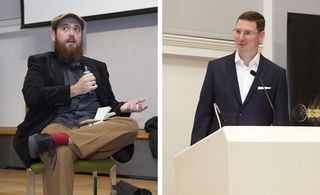
From left: Sound Portal musician Nathaniel Robin Mann and Gennady Terebkov, director of the BE OPEN Foundation
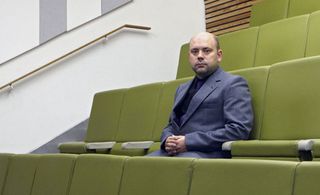
Richard Whitelaw, head of programmes at Sound and Music - the organization who commissioned the five Sound Portal musicians
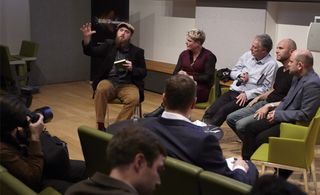
The panel explained the inspiration for the design of the portal – the opening scene of ‘A Space Odyssey’, and the aim of the project – to celebrate ‘design you can’t see’

Stephen Phillips, Arup’s product designer, spoke of the technicalities of creating a space to purvey ambisonic sound
Rosa Bertoli was born in Udine, Italy, and now lives in London. Since 2014, she has been the Design Editor of Wallpaper*, where she oversees design content for the print and online editions, as well as special editorial projects. Through her role at Wallpaper*, she has written extensively about all areas of design. Rosa has been speaker and moderator for various design talks and conferences including London Craft Week, Maison & Objet, The Italian Cultural Institute (London), Clippings, Zaha Hadid Design, Kartell and Frieze Art Fair. Rosa has been on judging panels for the Chart Architecture Award, the Dutch Design Awards and the DesignGuild Marks. She has written for numerous English and Italian language publications, and worked as a content and communication consultant for fashion and design brands.
-
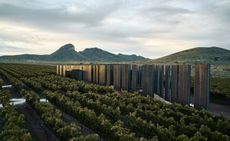 Southern Arizona sets the scene for a corking vineyard experience at Los Milics
Southern Arizona sets the scene for a corking vineyard experience at Los MilicsLos Milics winery, designed by Chen + Suchart Studio, is set among vines at the foothills of the Mustang Mountains
By Sofia de la Cruz Published
-
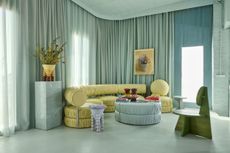 Spanish design studio Masquespacio's new HQ is a historical mansion bursting with colour
Spanish design studio Masquespacio's new HQ is a historical mansion bursting with colourDesign studio Masquespacio presents its new home and office, a bold and unique space in a beautifully refurbished historic villa near Valencia
By Léa Teuscher Published
-
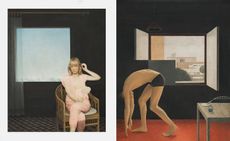 Surreal, uncanny, seductive: step into Graham Little’s world
Surreal, uncanny, seductive: step into Graham Little’s worldScottish artist Graham Little presents his first US retrospective at The FLAG Art Foundation in New York
By Hannah Silver Published